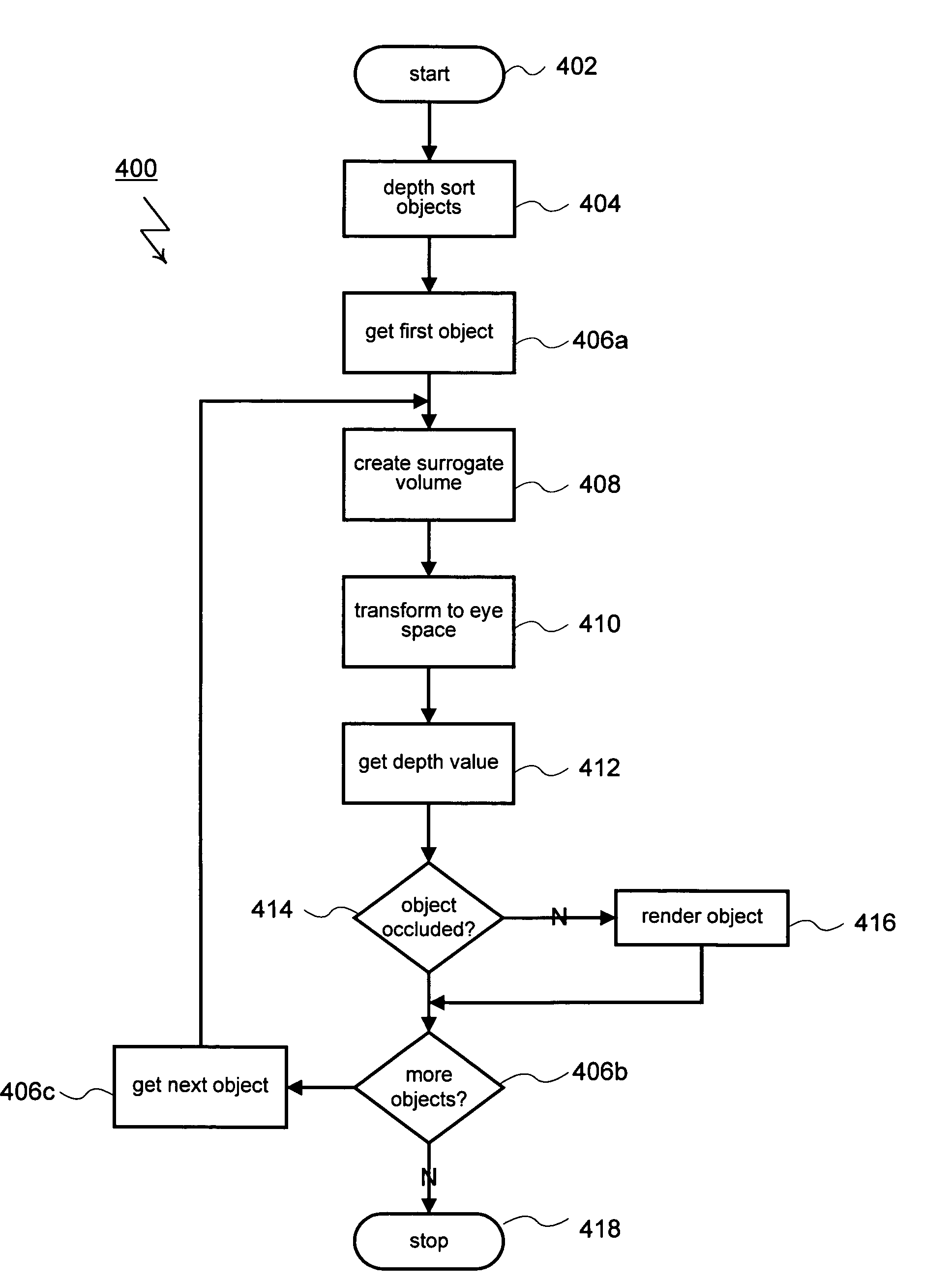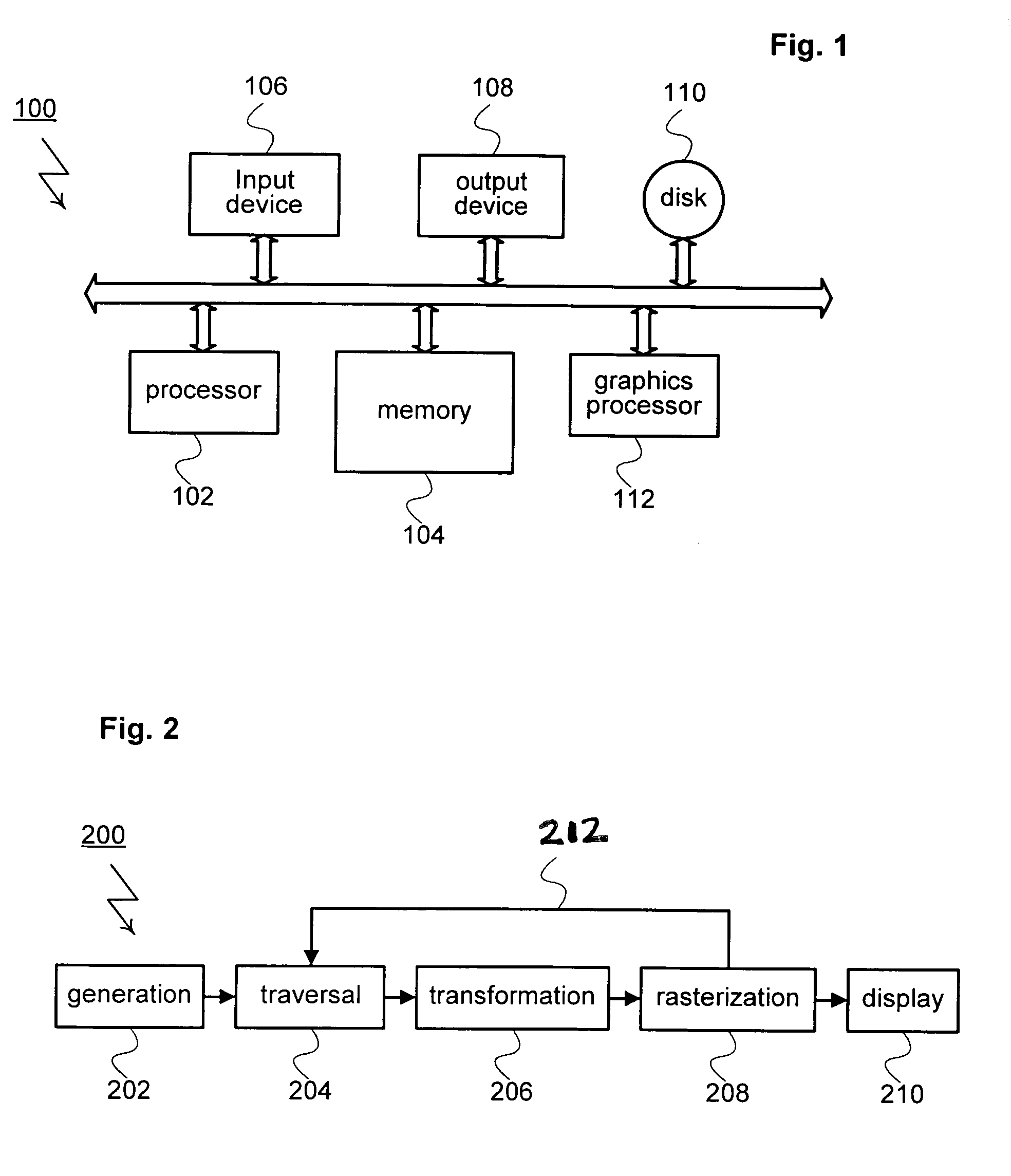Method and apparatus for early culling of occluded objects
- Summary
- Abstract
- Description
- Claims
- Application Information
AI Technical Summary
Benefits of technology
Problems solved by technology
Method used
Image
Examples
Embodiment Construction
[0019]Reference will now be made in detail to preferred embodiments of the invention, examples of which are illustrated in the accompanying drawings. Wherever convenient, the same reference numbers will be used throughout the drawings to refer to the same or like parts.
Environment
[0020]In FIG. 1, a computer system 100 is shown as a representative environment for the present invention. Structurally, computer system 100 includes a host processor 102 and a memory 104. An input device 106 and an output device 108 are connected to host processor 102 and memory 104. Input device 106 and output device 108 are connected to host processor 102 and memory 104. Input device 106 and output device 108 represent a wide range of varying I / O devices such as disk drives, keyboards, modems, network adapters, printers and displays. Each node 102 may also include a disk drive 110 of any suitable type (equivalently, disk drive 110 may be any non-volatile mass storage system such as “flash” memory). Compu...
PUM
 Login to View More
Login to View More Abstract
Description
Claims
Application Information
 Login to View More
Login to View More - R&D
- Intellectual Property
- Life Sciences
- Materials
- Tech Scout
- Unparalleled Data Quality
- Higher Quality Content
- 60% Fewer Hallucinations
Browse by: Latest US Patents, China's latest patents, Technical Efficacy Thesaurus, Application Domain, Technology Topic, Popular Technical Reports.
© 2025 PatSnap. All rights reserved.Legal|Privacy policy|Modern Slavery Act Transparency Statement|Sitemap|About US| Contact US: help@patsnap.com



